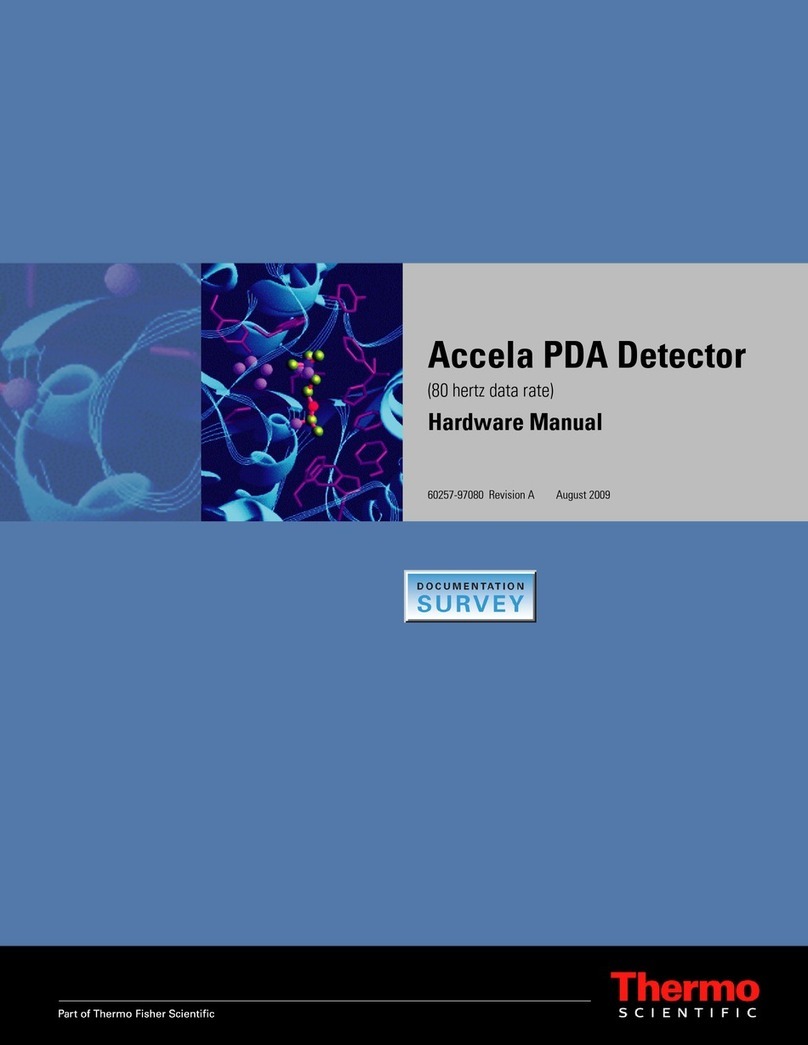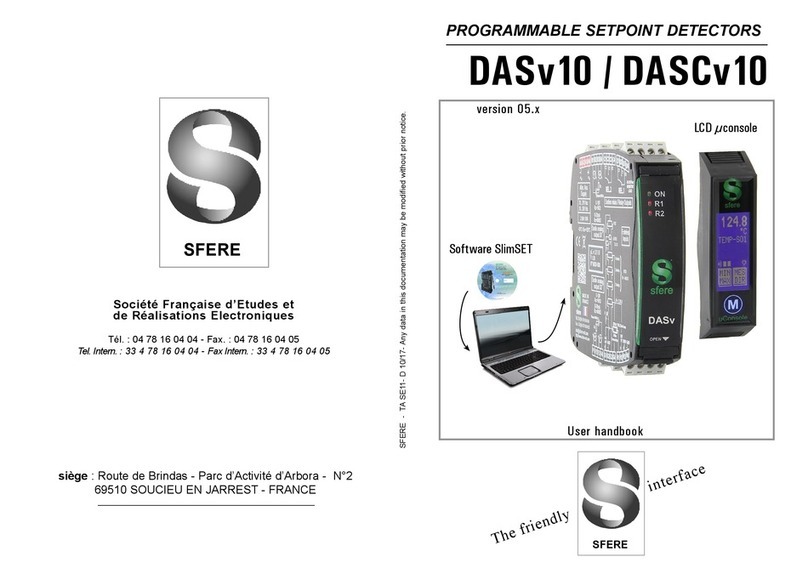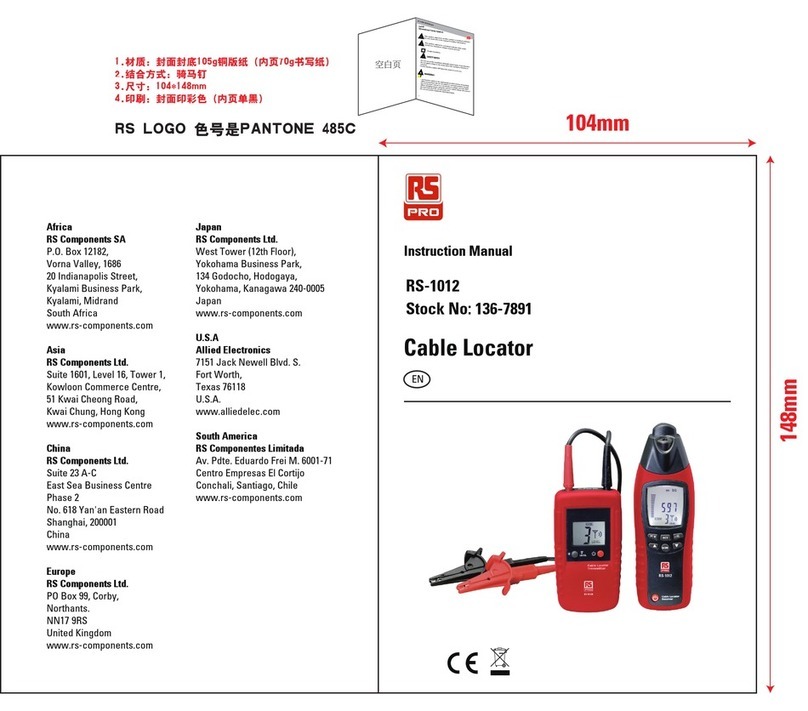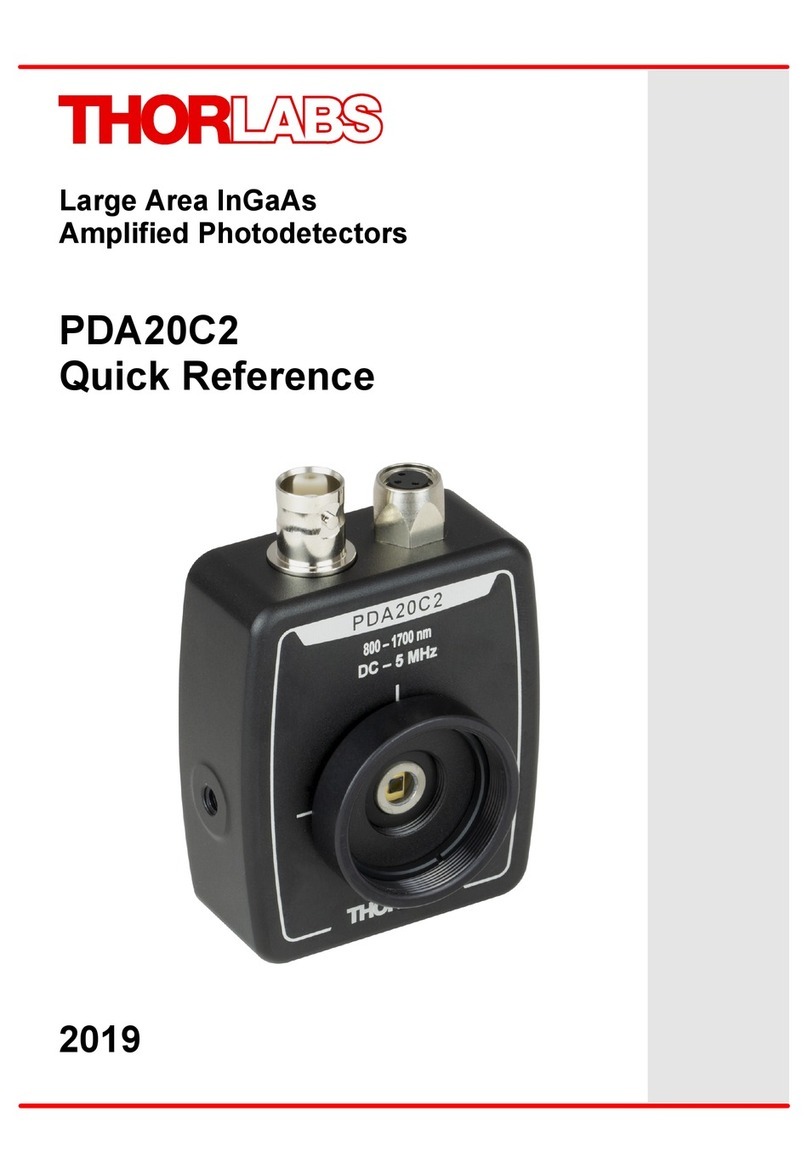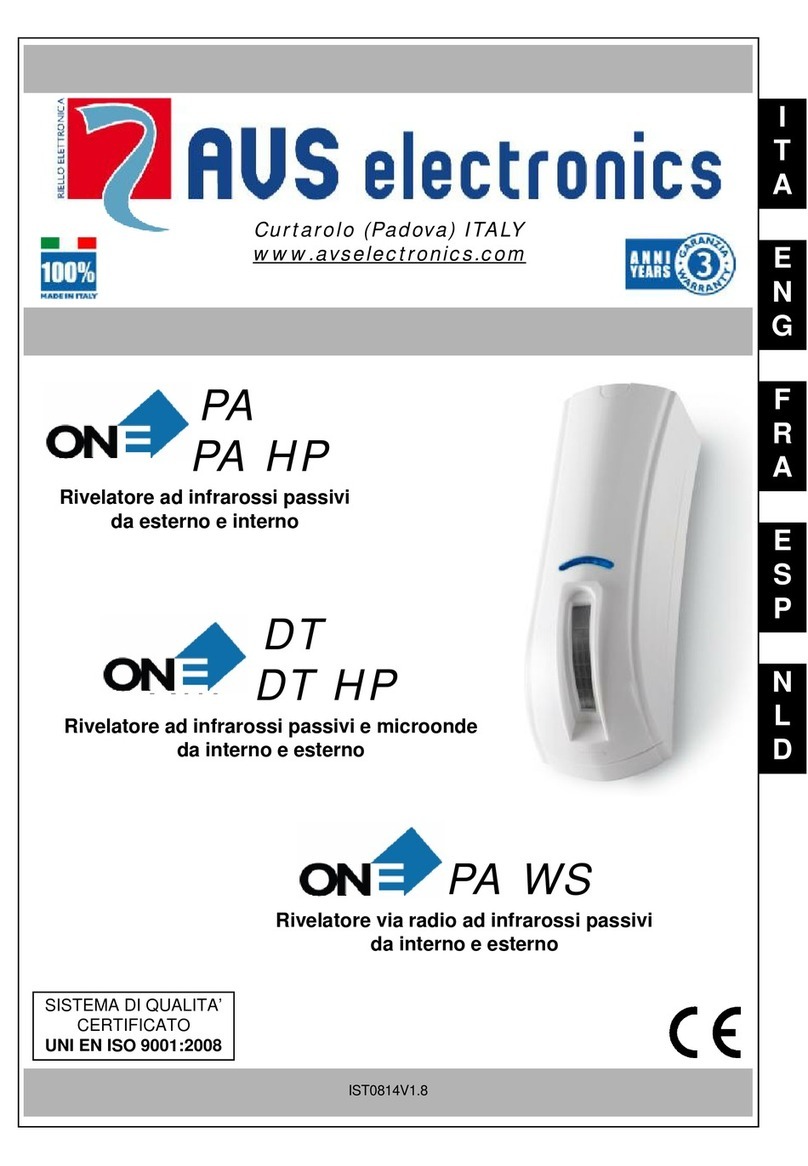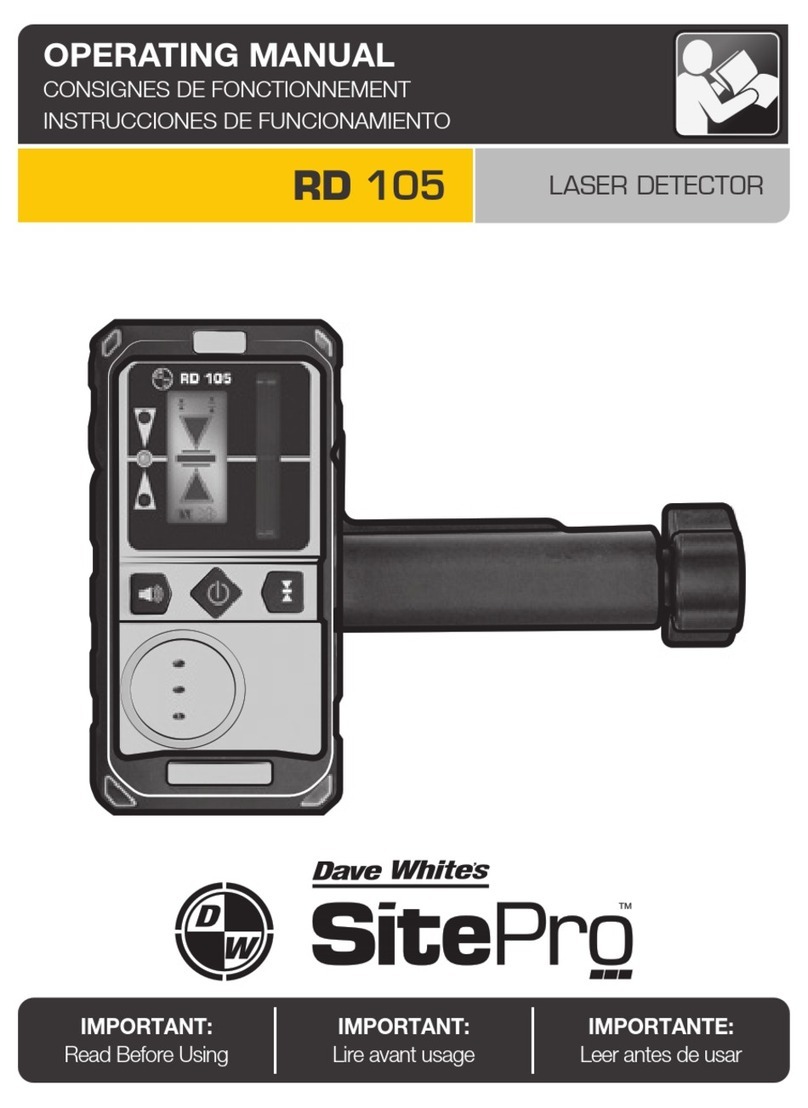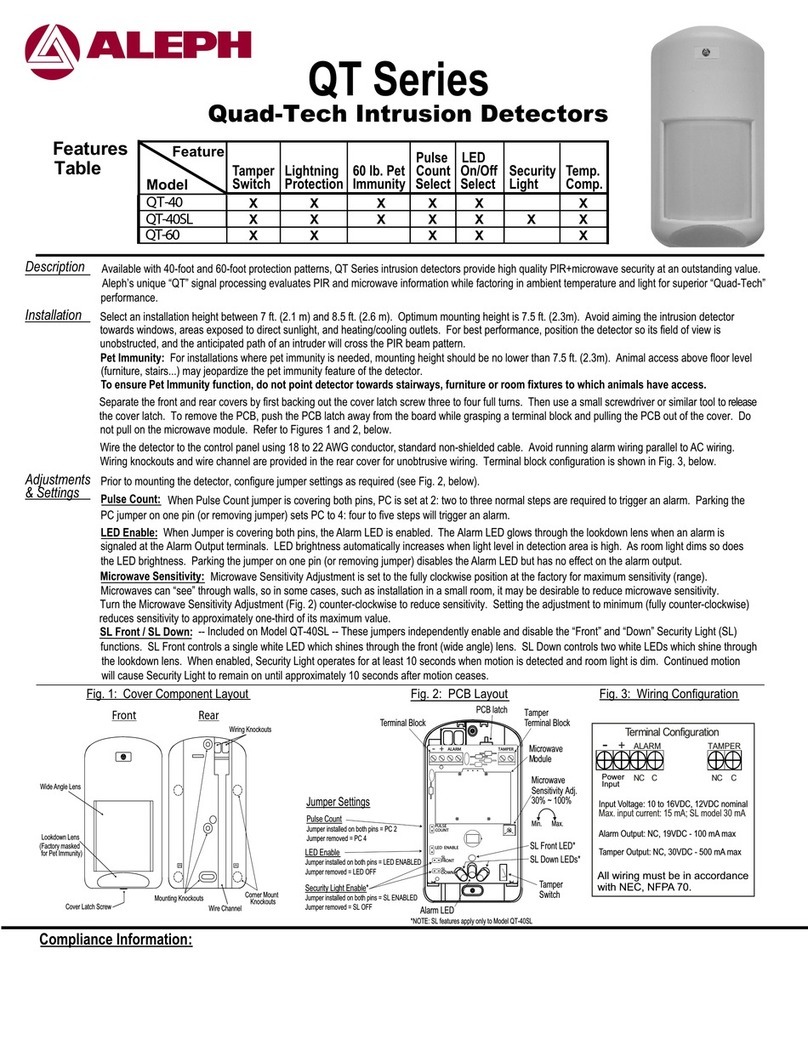CPF Beta Series User manual

RIVELATORE DOMESTICO DI GAS
MONOSSIDO DI CARBONIO
serie Beta mod. 760 CO &mod. SE320EC
serie Beta mod. 760/10 CO &mod. SE340EC
Attenzione:l’installazioneelamessafuoriserviziodell’apparecchio
devono essere eseguiti da personale tecnico specializzato.
L’installazione dell’apparecchio di combustione e l’eventuale disposi-
tivo di arresto devono essere conformi alle prescrizioni di legge nazi-
onali vigenti.
INSTALLAZIONE
INTRODUZIONE
Il rivelatore di gas Beta può essere installato in ambienti domestici.
Questo apparecchio è da impiegare solo per la rivelazione di Monossido
di Carbonio (“CO”).
Il Monossido di Carbonio è un gas molto velenoso, incolore ed inodore,
prodotto a causa di una cattiva combustione. L’alta velenosità del “CO”
fa sì che la sua presenza, anche a bassissime concentrazioni, possa
provocare ad un soggetto esposto per un lungo periodo nausea, cefa-
lea, perdita di coscienza. Se l’esposizione a concentrazioni maggiori
è continuativa, il “CO” può provocare la morte, avendo la proprietà di
legarsi al sangue molto più facilmente dell’ossigeno. Forniamo a questo
proposito la seguente tabella in cui si chiarisce la pericolosità del “CO”
in funzione della sua concentrazione e del periodo di esposizione:
Tab.1
E’ evidente che il rivelatore di “CO”, dovendo fornire un’azione preven-
tiva, deve intervenire a bassissime concentrazioni, prima cioè che la
quantità di “CO” assorbita dall’organismo diventi pericolosa.
L’apparecchio viene tarato in fabbrica per segnalare l’allarme quando
viene misurata una concentrazione di CO in aria pari a:
l50 ppm per 70 minuti
l100 ppm per 20 minuti
l300 ppm per 1 minuto
Queste soglie vengono garantite dalla ditta costruttrice per un periodo
superiore ai 6 o 10 anni, dopo tale periodo o in caso di accensione del
LED “FAULT”, il prodotto dovrà essere sostituito.
Sul frontale del rivelatore vi è indicata inoltre la data oltre la quale il
prodotto deve necessariamente essere sostituito.
Concentrazione
di CO in aria
100 ppm (0,01%)
400 ppm (0,04%)
1600 ppm (0,16%)
6400 ppm (0,64%)
12800 ppm (1,28%)
Sintomi sull’uomo
Leggero mal di testa in 2-3 ore.
Leggero mal di testa in 1-2 ore, in aumento dopo 2-3 ore.
Mal di testa, capogiri e nausea in 20 minuti, morte entro 2 ore.
Mal di testa e capogiri in 1 o 2 minuti, morte in 10-15 minuti.
Morte in 1-3 minuti.
- L’installazione di questo apparecchio non deve essere considerata come sostituto
dell’installazione, dell’uso e della manutenzione corretti di apparecchi a combustione,
compresi sistemi di ventilazione e scarico idonei.
- Il presente apparecchio è stato progettato per proteggere le persone dagli effetti acuti
dell’esposizione al monossido di carbonio. Esso non protegge completamente le persone
con particolari patologie. In caso di dubbio consultare un medico.
- Una lunga esposizione a livelli bassi (>10 ppm) di “CO” può provocare effetti cronici.
In caso di dubbio consultare un medico.
- Il dispositivo di allarme per “CO” è conforme alla norma europea EN 50291-1:2010 “Ap-
parecchi elettrici per la rilevazione di monossido di carbonio in ambienti domestici”.
SEGNALAZIONI LUMINOSE E ACUSTICHE
Questo rivelatore è dotato, sulla parete frontale, di tre segnalazioni
luminose:
- LED VERDE (ON): STATO di ON in normale funziona-
mento oppure in stabilizzazione.
- LED GIALLO (FAULT): Il rivelatore non funziona corretta-
mente e deve essere sostituito.
- LED ROSSO (ALARM): Indica lo stato di allarme per fuga
di monossido di carbonio (CO) oppure la modalità di stabi-
lizzazione.
Una descrizione completa degli STATI del rivelatore è riportata nella
pagina successiva nel paragrafo “STATI DEL RIVELATORE”.
POSIZIONAMENTO DELL’APPARECCHIO
Il rivelatore di gas Beta è dotato di un elemento sensibile alla concen-
trazione di Monossido di Carbonio nell’aria.
Quando il rivelatore è acceso in STATO di “ON” sul frontale il LED
VERDE (ON) rimane costantemente acceso.
Quando nell’aria la quantità di ppm di monossido di carbonio (“CO”)
misurata dal rivelatore supera una delle 3 soglie d’allarme pressate,
il rivelatore passa nella modalità di “ALLARME” attivando con intermit-
tenza di 0,5 sec. il buzzer ed il LED ROSSO.
FUNZIONAMENTO - GENERALITA’
Fig.1
30cm
15cm
1-3mt
I rivelatori Beta vanno installati in ogni locale contenente un apparec-
chio a combustione e rivelatori aggiuntivi dovrebbero essere installati
per assicurare che le segnalazioni adeguate arrivino agli occupanti
degli altri locali (es. locali distanti o camere da letto).
Se il rivelatore Beta viene installato in un locale contenente un appa-
recchio a combustione:
lDeve essere installato ad un’altezza superiore a quella di qualsiasi
porta o finestra e vicino al soffitto.
lSe installato a soffitto deve essere installato ad una distanza di alme-
no 30cm da qualsiasi parete.
lSe installato su una parete deve essere posizionato ad una distanza
di 15cm dal soffitto.
lDeve essere installato ad una distanza compresa tra 1 e 3 mt dall’uti-
lizzatore a gas (cucina, caldaia etc.).
Se il rivelatore Beta viene installato in un locale privo di apparecchio a
combustione (camera da letto, salotto etc.).
lDeve essere montato a parete in linea con l'altezza della respirazio-
ne delle persone presenti nel locale.
Fig.2
Beta
Beta
Beta
L’apparecchio NON DEVE ESSERE INSTALLATO:
lSu un ripiano.
lDirettamente sopra il lavabo o l’apparecchio a gas.
lIn locali chiusi o angoli in cui non c’è una libera circolazione
dell’aria.
Marchio
Mod.
Beta 760 CO
Beta 760/10 CO
Beta SE320EC
Beta SE340EC
Vita stimata
> 6 Anni
10 Anni
> 6 Anni
10 Anni
ON
Italiano
230Vac-50Hz
12Vdc
2
1
> 6 Anni
10 Anni

Attenzione: I collegamenti elettrici devono essere effettuati me-
diante cavi sottotraccia.
Deve essere previsto un dispositivo per la disconnessione del rivela-
tore dalla rete di alimentazione, con apertura contatti di almeno 3mm
secondo quanto descritto dalla “Normativa Europea CEI EN 60335-1”.
Il rivelatore gas serie Beta può essere alimentato sia a 230Vac che
a 12Vdc:
la230Vac-50/60Hz attraverso i morsetti “L” e “N” (Fig.4).
Se alimentato a 230Vac - 50/60Hz i morsetti “ +” e “ -” possono fornire
alimentazione un dispositivo esterno a 12Vdc max 50mA.
la 12Vdc attraverso i morsetti “ +” e “ -” (Fig.5).
Appena alimentato il rivelatore entra in modalità di stabilizzazione.
I rivelatori gas serie Beta mod. 760 CO e mod. SE320EC hanno una
durata di vita di più 6 anni (in condizioni normali) mentre i rivelatori gas
serie Beta 760/10 CO e mod. SE340EC hanno una durata di vita di
10 anni (in condizioni normali).
PROCEDURA PER L’INSTALLAZIONE
COLLEGAMENTO ELETTRICO: ALIMENTAZIONE
Con l’ausilio di un cacciavite svitare la
vite posta sul lato destro dell’apparecchio
e sollevare il coperchio (Fig.3).
Posizionare in modo corretto la base e
ssarla sulla scatola ad incasso 3 moduli
o sulla parete utilizzando viti e tasselli in
dotazione.
Per il ssaggio dei tasselli forare la parete
con una punta di diametro 5mm.
CARATTERISTICHE DEL SEGNALE DI USCITA
I rivelatori serie Beta sono provvisti di un relè in uscita con i contatti
liberi da tensione; portata contatti 8A 250Vac / 30Vdc.
Fig.3
230Vac-50/60Hz
L N
MODALITA’ DI STABILIZZAZIONE
Una volta acceso, il rivelatore ha bisogno di un periodo di stabilizzazi-
one di circa due minuti prima di funzionare correttamente.
Durante tale periodo le funzioni di rivelazione sono inibite.
Tale stato è rappresentato dal lampeggio sincrono, ogni 8 secondi, dei
LED VERDE e ROSSO.
Trascorso il periodo di stabilizzazione, il rivelatore passa a normale
stato di ON.
lSTATO di FAULT
In questo STATO il rivelatore di gas emette 2 “Beep” e 2 lampeggi del
LED GIALLO consecutivi ogni minuto (Tab. 2).
Questo signica che il rivelatore gas Beta non funziona più corretta-
mente e la rivelazione gas non è più garantita.
Il rivelatore gas deve essere sostituito.
E’ possibile far tacere i 2 Beep per un periodo di tempo di 24 ore pre-
mendo il tasto TEST/HUSH (paragrafo TEST/HUSH).
= N° Lampeggi LED al minuto
= N° Beep al minuto
STATI DEL RIVELATORE
Nella tabella “Tab.2” sono visualizzati tutti i restanti STATI di funziona-
mento del rivelatore gas Beta.
Ogni STATO è riconoscibile da un numero specico di Lampeggi e/o
“Beep” del buzzer nell’arco di tempo di 1 minuto.
Tab. 2
lSTATO di ALARM
Il rivelatore sta rilevando una concentrazione di gas Monossido di
Carbonio sopra le soglie di allarme. In questo STATO il rivelatore fa
suonare ad intermittenza il buzzer “Beep” e fa lampeggiare il LED
ROSSO.
Solo se la quantità di gas misurata nell’aria è inferiore a 300 ppm è
possibile far tacere il buzzer per un periodo di tempo di 15 minuti
premendo il tasto TEST/HUSH (paragrafo TEST/HUSH).
Trascorso tale periodo, se la concentrazione di gas è ancora superiore
alle soglie di allarme, il buzzer riprende a suonare.
lSTATO di FINE VITA
In questo STATO il rivelatore di gas emette 3 “Beep” e 3 lampeggi del
LED GIALLO consecutivi ogni minuto (Tab. 2). Il rivelatore di gas ha
superato il tempo massimo nel quale è garantito il funzionamento.
Il rivelatore di gas Beta deve essere sostituito.
lSTATO di ON
Il rivelatore gas Beta mantiene acceso in modo fisso il LED VERDE.
Questo signica che il rivelatore gas Beta èattivo nella rilevazione di
Monossido di Carbonio (CO).
lSELF TEST
Il rivelatore gas Beta, ogni 10 minuti, effettua un Self test automatico.
Questa operazione è un controllo dei componenti elettronici presenti
al proprio interno, incluso il sensore, per garantire la piena funzionalità
del rivelatore. Il Self test è uno stato autodiagnostico che non è raffigu-
rato in modo visibile all’utente.
Nel caso in cui il Self test rilevasse dei problemi, il rivelatore passa allo
STATO di FAULT.
llSTATO di ALARM + FAULT
(Corrisponde allo stato di ALARM +lampeggio del LED GIALLO).
In questo STATO il rivelatore fa suonare ad intermittenza il buzzer
“Beep” e fa lampeggiare contemporaneamente sia il LED ROSSO
che il LED GIALLO.
Il rivelatore sta rilevando una concentrazione di gas Monossido di Car-
bonio sopra le soglie di allarme e contemporaneamente si sta veri-
cando uno dei due casi seguenti:
- la concentrazione di “CO” rilevata è superiore al fondo scala del rive-
latore;
- il rilevatore sta riscontrando un’anomalia di funzionamento.
Solo se la quantità di gas misurata nell’aria è inferiore a 300 ppm è
possibile far tacere il buzzer per un periodo di tempo di 15 minuti
premendo il tasto TEST/HUSH (paragrafo TEST/HUSH).
Trascorso tale periodo, se la concentrazione di gas è ancora superiore
alle soglie di allarme, il buzzer riprende a suonare.
Se, cessato l’allarme di fuga di gas, il rivelatore si trovasse nello
stato di FAULT, esso deve essere sostituito.
Fig.4
12Vdc
+ -
+ -
Fig.5
12Vdc
lVicino a pareti o altri ostacoli che possano ostruire il usso del gas
dall’utilizzatore al rivelatore, o ad aspiratori e ventole che possano de-
viare il usso dell’aria.
lIn ambienti dove la temperatura possa portarsi al di sopra di 45°C o
al di sotto di -10°C.
lIn ambienti critici ove polvere e sporco possano danneggiare il sensore.
lIn una parete umida o bagnata.
STATO
FAULT
ALARM
ALARM + FAULT
FINE VITA
&
-
N°60
N°60
-
&
-
-
-
-
&
N°2
-
N°60
N°3
N° Lampeggi LED & “Beep” al minuto
43

Beta 760 CO
12Vdc
Elettrovalvola
Normalmente
Aperta a 12Vdc 12Vdc
Beta 756
Esempio di applicazione con elettrovalvola Normalmente Chiusa (N.C.)
ATTENZIONE: Se durante il funzionamento avviene una mo-
mentanea assenza di tensione, la valvola normalmente chiu-
sa (N.C.) si chiude automaticamente e si renderà necessario
provvedere al riarmo manuale della valvola, dopo il ripristino
della tensione.
Gli schemi di seguito rappresentati mostrano il collegamento tra due
rivelatori con un’unica elettrovalvola. E’ possibile collegare anche
più di due rivelatori ripetendo i collegamenti qui riportati.
ES. Collegamento con valvola a riarmo manuale Normalmente chiu-
sa a 230Vac-50/60Hz e un secondo rivelatore Beta CO.
ES. Collegamento con valvola a riarmo manuale Normalmente chiu-
sa a 12Vdc e un secondo rivelatore remoto Beta.
Gli schemi di seguito rappresentati mostrano il collegamento tra
due rivelatori con un’unica elettrovalvola. E’ possibile collegare an-
che più di due rivelatori ripetendo i collegamenti qui riportati.
Il rivelatore serie Beta possiede al suo interno un JUMPER J4 che
permette di selezionare il tipo di elettrovalvola da utilizzare. Essa
puo’ essere di tipo N.A.(Normalmente Aperta) oN.C. (Normal-
mente Chiusa). Ricordiamo che l’elettrovalvola va installata sulla
tubazione del gas all’esterno del locale da controllare in quanto non
può proteggere da perdite che avvengano a monte della stessa.
Posizione JUMPER J4.
Ideale per le Elettrovalvole Normalmente aperte
230Vac-50/60Hz
Elettrovalvola gas
Normalmente Chiusa
a riarmo manuale
Beta 760 CO
230Vac-50/60Hz
Elettrovalvola
Normalmente
Aperta a 230Vac
230Vac-50/60Hz
Esempio di applicazione con elettrovalvola Normalmente Aperta (N.A.)
230Vac-50/60Hz
Elettrovalvola gas
Normalmente Aperta
a riarmo manuale
Beta 760 CO
COLLEGAMENTO REMOTO
COLLEGAMENTO ELETTROVALVOLE
POSIZIONE JUMPER J4 per EV Normalmente aperte (N.A.)
POSIZIONE JUMPER J4 per EV Normalmente chiuse (N.C.)
Posizione JUMPER J4.
ideale per le elettrovalvole Normalmente Chiuse o per
il controllo contemporaneo dell’elettrovalvola e di un
carico elettrico esterno.
Esempio: Collegamento con valvola a riarmo manuale Normal-
mente aperta a 12Vdc e un secondo rivelatore Beta.
Esempio: Collegamento con valvola a riarmo manuale Normalmente
aperta a 230Vac-50/60Hz e un secondo rivelatore Beta CO.
12vdc Elettrovalvola
Normalmente
Chiusa
12vdc
Beta 760 CO Beta 756
Il rivelatore gas serie Beta possiede due morsetti “REMOTE”, attivi in
chiusura che servono per collegare i seguenti rivelatori remoti (Fig.6):
- per fumo: serie RF.
- per gas “CO”: serie Beta mod. 760 CO; SE320EC emod. 760/10 CO / SE340EC.
- per gas METANO: serie Beta mod. 756/M; SE396KM o serie GAMMA mod.
656C/M; SE296KM oppure GAMMA mod. 652-O/M ; SE230KM/SE233KM.
- per gas GPL: serie Beta mod. 756/G; SE396KG o serie GAMMA mod.
656C/G; SE296KG oppure GAMMA mod. 652-O/G ; SE230KG/SE233KG.
Se ai morsetti “REMOTE” non vengono collegati i remoti, questi
devono rimanere inalterati, cioè sempre scollegati.
+ - REMOTE NC COM NO
serie Beta mod. 760 CO / SE320EC serie Beta :
mod.760 CO; SE320EC
mod.760/10 CO; SE340EC
mod.756; SE396K
mod.752; SE330/333K
serie GAMMA:
mod. 656C; SE296K
mod. 652-O; SE230/233
Fig.6
R R
5 6
Beta 760 CO
230Vac-50/60Hz Elettrovalvola
Normalmente
Chiusa
Beta 760 CO
230Vac-50/60Hz
R R
5 6
In caso di chiusura del contatto remoto per almeno 20 secondi, il
rivelatore Beta entra in allarme facendo suonare ad intermittenza il
BUZZER senza lampeggio del LED ROSSO.
serie Beta mod. 760/10 CO / SE340EC
Beta 760 CO Beta 760 CO
56
COLLEGAMENTO CON RIVELATORE FUMO mod. RF

CONDIZIONI GENERALI DI GARANZIA
IL PRESENTE CERTIFICATO È L’UNICO DOCUMENTO CHE DÀ DIRITTO ALLA
RIPARAZIONE DEL RIVELATORE FUGHE DI GAS IN GARANZIA
• Il rivelatore è GARANTITO per un periodo di 24 mesi dalla data di acquisto.
• Non sono coperti da GARANZIA eventuali danni derivati da manomissioni,
uso ed installazione errati o impropri.
• La GARANZIA è valida solo se debitamente compilata.
• In caso di difetti coperti da GARANZIA, il produttore riparerà o sostituirà il
prodotto gratuitamente.
PRESTAZIONE FUORI GARANZIA:
Trascorsi i termini o la durata della GARANZIA le eventuali riparazioni verran-
no addebitate in funzione alle parti sostituite e al costo della manodopera.
CERTIFICATO DI GARANZIA
DA COMPILARE E SPEDIRE IN CASO DI GUASTO
APPARECCHIO Beta:
760 CO 760/10 CO SE320EC SE340EC
Numero di serie (s.n.)___________________________________________
RIVENDITORE
Timbro:
Data di acquisto:
________/________/________
UTILIZZATORE
Cognome e nome______________________________________________
Via__________________________________________N°______________
C.A.P.__________________Città__________________________________
Telefono______________________________________________________
DA COMPILARSI A CURA DELL’ INSTALLATORE:
Data di installazione: ___________________________________________
Data Sostituzione rivelatore: _____________________________________
Locale di installazione: __________________________________________
Numero di serie apparecchio:_____________________________________
(Da leggere sul coperchietto estraibile)
Timbro
Firma ______________________________________________________
La casa costruttrice riserva il diritto di apportare qualsiasi modifica, estetica o funzionale, senza preavviso alcuno
ed in qualsiasi momento.
CARATTERISTICHE TECNICHE
- Alimentazione: 230Vca- 50/60Hz 2,3VA / 12Vcc 0,6W.
- Tipo di sensore: Sensore elettrochimico.
- Durata vita sensore:
Beta 762 CO; SE320EC: 6 anni in ambiente domestico secondo speciche.
Beta 762/10 CO; SE40EC: 10 anni in ambiente domestico secondo speciche.
- Temperatura di lavoro: -10°C ... +45°C.
- Umidità relativa: 30% ... 90% UR.
- Limite funzionamento sensore: 5000 ppm max 15 minuti
- Tempo massimo di stoccaggio: 6 mesi
- Soglie d’intervento:
l50 ppm per 70 minuti.
l100 ppm per 20 minuti.
l300 ppm per 1 minuto.
- Segnalazione acustica: 85 dB(A) a 1 metro.
- Grado di protezione: IP42.
- Autodiagnosi elettronica con segnalazione eventuali anomalie.
- Il dispositivo di allarme per “CO” è conforme alla norma europea EN 50291-
1:2010 “Apparecchi elettrici per la rilevazione di monossido di carbonio in am-
bienti domestici”.
Dis. 0134184 a Cod. 2.710.3004
Si consiglia di far eseguire dal proprio installatore una verica del fun-
zionamento del rivelatore almeno una volta l’anno.
VERIFICHE PERIODICHE
Fare leva nella fessura con un cacciavite piatto (Fig.7) e aprire il coper-
chietto al di sotto dei LED di segnalazione.
Premendo il tasto TEST/HUSH (Fig.8) è possibile:
ltestare il funzionamento dei LED e del BUZZER dell’apparecchio
quando il rivelatore è in stato di ON.
In questo caso il rivelatore fa lampeggiare uno alla volta i LED, associ-
ando ad ogni lampeggio un “Beep”. Si consiglia di effettuare questa
operazione almeno una volta alla settimana.
In caso di anomalia contattare l’assistenza.
lfar tacere il suono del BUZZER (Beep) quando il rivelatore è nello
stato di FAULT e FINE VITA.
Il rivelatore di gas smetterà di suonare per un arco di tempo di 24 ore
mentre il LED GIALLO continuerà a lampeggiare.
Trascorse le 24 ore il rivelatore di gas tornerà a suonare.
lfar tacere il suono del BUZZER (Beep)quando il rivelatore è in stato
di ALARM con concentrazione inferiore a 300 ppm.
Il rivelatore di gas smetterà di suonare per un arco di tempo di 15
minuti, mentre il LED ROSSO continuerà a lampeggiare.
Trascorso tale periodo, se la concentrazione di gas è ancora superiore
alle soglie di allarme, il buzzer riprende a suonare.
TASTO TEST/HUSH
AVVERTENZE
Per la pulizia dell’apparecchio utilizzare un panno per togliere la pol-
vere posatasi sull’involucro. Tenere presente che il sensore ha una
buona resistenza a prodotti d’uso comune quali spray, detersivi, al-
cool, colle o vernici. Questi prodotti possono contenere sostanze che,
in quantità elevate, interferiscono con il sensore provocando falsi al-
larmi. Si consiglia di ventilare il locale quando si utilizzano questi
prodotti. I vapori di solventi o siliconi possono deteriorare il sensore
gas anche durante lo stoccaggio in magazzino.
L’utilizzo del rivelatore di gas al di fuori dei range di temperatura e
umidità indicati può danneggiare il sensore e diminuirne il tempo di
vita. Si rammenta che il rivelatore non è in grado di rilevare perdite
che avvengano fuori dal locale in cui è installato oppure all’interno dei
muri o sotto al pavimento.
1) Aprire porte e nestre per aumentare la ventilazione dell’ambiente.
2) Chiudere il rubinetto del contatore del gas e smettere di utilizzare
qualunque apparecchio a combustione.
3) Se l’allarme continua e la causa di presenza gas non è individuabile
o eliminabile, abbandonare l’immobile e, dall’esterno, avvisare il servizio
d’emergenza.
4) Se ci fossero persone con sintomi di nausea o cefalea, chiamare
immediatamente il numero di emergenza sanitaria.
Se l’allarme cessa, è necessario individuare la causa che l’ha provo-
cato e provvedere di conseguenza.
ATTENZIONE!
In caso di allarme:
Fig.7 Fig.8
GECA Srl
Via E. Fermi, n°98 25064 Gussago (BS)
Italy Tel. +39 030 3730218
www.gecasrl.it
Tecnocontrol Srl
Via Miglioli, n°47 20090 Segrate (MI)
Italy Tel. +39 02 26922890
www.tecnocontrol.it
7
Informazioni agli utenti:
L’etichetta con il cassonetto barrato presente sul prodotto indica che il prodotto
non deve essere smaltito tramite la procedura normale di smaltimento dei riuti
domestici. Per evitare eventuali danni all’ambiente e alla salute umana separare
questo prodotto da altri riuti domestici in modo che possa venir riciclato in base
alle procedure di rispetto ambientale. Per maggiori dettagli sui centri di raccolta
disponibili, contattare l’ufcio governativo locale o il rivenditore del prodotto.
DIRETTIVA 2012/19/UE (Riuti di Apparecchiature Elettriche ed Elettroniche - RAEE):

Warning: the instrument must be installed and put out of order
by qualied technical personnel.
Installation of the combustion appliance and any stop device must be
installed in conformity with the domestic laws in force.
INSTALLATION WARNING
INTRODUCTION
The Beta gas detector can be installed in domestic environments.
This appliance should only be used for the detection of carbon mono-
xide (“CO”).
Carbon monoxide is a very poisonous, colorless and odorless gas pro-
duced due to bad combustion.
The high poisonous of the “CO” can causes - even at very low concen-
trations, if exposed for a long period - nausea, cephalia, loss of con-
sciousness. If exposure to higher concentrations is continuous, “CO”
may lead to death, having the ability to bind to blood much more easily
than oxygen. In this regard, we give the following table to clarify the
“CO” dangerousness in function of its concentration and exposure:
Tab.1
It is evident from the above that the “CO” detector, having to provide
a preventive action, must intervene at very low concentrations, before
that the concentration of “CO” absorbed by the organism becomes
pernicious.
The unit is calibrated at the factory to signal the alarm when a “CO”
concentration is measured in the air of:
l50 ppm for 70 minutes
l100 ppm for 20 minutes
l300 ppm for 1 minute
These thresholds are guaranteed by the manufacturer for a period of
more than 6 or 10 years after this period or when the “FAULT” LED is
switched on, the product must be replaced.
On the front of the detector is also indicated the date beyond which the
product must necessarily be replaced.
Concentration
of “CO” in air
100 ppm (0,01%)
400 ppm (0,04%)
1600 ppm (0,16%)
6400 ppm (0,64%)
12800 ppm (1,28%)
Symptoms on human
Light headache in 2-3 hours.
Light headache in 1-2 hours, rising after 2-3 hours.
Headaches, dizziness and nausea in 20 minutes, dying within 2 hours.
Headaches and diarrhea in 1 or 2 minutes, death in 10-15 minutes.
Death in 1-3 minutes.
l Installation of this appliance should not be considered as a substitute for
proper installation, operation and maintenance of combustion appliances, in-
cluding suitable ventilation and drainage systems.
l This unit is designed to protect people from the acute effects of expo-
sure to carbon monoxide. It does not completely protect people with particular
pathologies. In case of doubt, consult a doctor.
l Long exposure to low levels (> 10 ppm) of “CO” may cause chronic ef-
fects.
In case of doubt, consult a doctor.
l The “CO” alarm device conforms to European Standard EN 50291-1:
2010 “Electrical Appliances for Detecting Carbon monoxide in domestic en-
vironments.”
VISUAL AND ACUSTIC SIGNALS
This detector features with three luminous signals:
- GREEN LED (ON): STATUS ON in normal operation
or in stabilization.
- YELLOW LED (FAULT): The detector does not work
properly and must be replaced.
- RED LED (ALARM): Indicates the status of alarm for
exceeded concentration of carbon monoxide “CO” or
stabilization mode.
A complete description of the detector’s mode can be found on the next
page in the “DETECTOR’S MODE” section.
POSITIONING
The Beta gas detector has a sensitive element to the concentration of
carbon monoxide in the air.
When the detector is in MODE ON, the GREEN LED is constantly ON.
When the concentration of carbon monoxide (CO) measured in the air
by the detector exceeds one of the three predefined alarm thresholds it
turns to the “ALARM” mode by activating it with 0.5 sec intermittence.
the buzzer and the RED LED.
GENERAL OPERATIONS
Beta detectors must be installed in each room containing a combus-
tion appliance and additional detectors should be installed to ensure
that proper signaling is provided to the occupants of other premises
(eg remote areas or bedrooms).
If the Beta detector is installed in a room containing a combustion
equipment:
lIt should be installed at a height higher than any door or window and
close to the ceiling.
lIf installed on a ceiling, it must be installed at a distance of 30 cm from
any wall.
lIf installed on a wall, it must be located at a distance of 15 cm from
the ceiling.
lIt should be installed at a distance of 1 to 3 mt from the gas utilities
(kitchen, boiler, etc.).
If the Beta detector is installed in a room without a combustion unit
(bedroom, living room, etc.).
lDoes be wall-mounted in line with the height of breathing of the people
in the room.
Fig.1
30cm
15cm
1-3mt
Fig.2
Beta
Beta
Beta
The appliance MUST NOT BE INSTALLED:
lOn a shelf.
lDirectly above the washbasin or gas appliance.
lIn closed rooms or corners where there is no free air circulation.
l Near to walls or other obstacles that can block gas ow from the user
to the detector, or aspirators and fans that can deactivate airow.
lIn environments where the temperature may reach above 45°C or
below -10°C.
Brand
Mod.
Beta 760 CO
Beta 760/10 CO
Beta SE320EC
Beta SE340EC
Estimated life
> 6 Years
10 Years
> 6 Years
10 Years
CARBON MONOXIDE DETECTOR
serie Beta mod. 760 CO & mod. SE320EC
serie Beta mod. 760/10 CO & mod. SE340EC
English
ON
12
230Vac-50Hz
12Vdc
> 6 Years
10Years

Attention: The electrical connection has to be carried out by spe-
cialized technical staff.
It has to be provided with an device, to be disowned from the detector
and the feeding net, with minimun 3 mm contact distance in accordance
wit has written in the “European Standard EN 60335-1”.
The gas detector Beta series can work at 230Vac or 12Vdc:
lAt 230Vac-50/60Hz using the terminals “L” and “N” (Fig.4).
In this case the terminals “+” and “-” can supply power to an external
device at 12Vdcv max 50mA.
lAt 12 Vdc using the terminals “+” and “-” ( Fig.5)
Immediately after you have give power the detector enters in stabili-
zation mode.
The Beta series gas detectors mod. 760 CO and mod. SE320EC
have a lifestime of more than 6 years (normal conditions) while the gas
detectors series Beta 760/10 CO and mod. SE340EC have a lifetime
of 10 years (normal conditions)..
FIRST TIME USE
ELECTRICAL CONNECTION: POWER SUPPLY
With the help of a screwdriver, unscrew the screw on the right side of
the product and remove the front panel (Fig.3).
Position the base correctly and secure it to the 3-module recessed box
or to the wall using screws and dowels supplied.
For xing the dowels, pierce the wall with a tip of 5 mm diameter.
CHARACTERISTICS OF THE OUTPUT
The Beta gas detector provided with a relay with free contacts with-
out tension; contact range 8A 250Vac/ 30Vdc.
Fig.3
230Vac-50/60Hz
L N
STABILIZATION MODE
Once switched on, the detector needs a stabilization period of about
two minutes before working properly. During this period, the detection
functions are inhibited.
This state is represented by the synchronous ashing every 8 seconds
of the GREEN and RED LEDs.
After the stabilization period has elapsed, the detector switches to nor-
mal state ON.
lFAULT MODE
In this status the gas detector emits 2 “Beeps” and 2 “ashes” of the
YELLOW LED per minute (Tab 2).
This means that the Beta gas detector is no longer functioning prop-
erly and gas detection is no longer guaranteed.
The gas detector must be replaced.
You can silence the 2 Beeps for a 24-hour period by pressing the
TEST / HUSH key (see TEST/HUSH paragraph).
= N° Flash led/minute
= N° Beep/minute
DETECTOR’S MODE
Tab. 2
lALARM MODE
In this mode the detector is detecting a concentration of carbon
monoxide over the alarm thresholds. In this state, the detector emits
“Beeps” and the RED LED ash intermittently.
Only if the amount of gas measured in air is less than 300 ppm it is
possible to silence the buzzer for a period of 15 minutes by pressing
the TEST / HUSH button (see TEST / HUSH paragraph).
After that period, if the gas concentration exceeds the alarm thresh-
olds, the BUZZER will be automatically switched on.
lEND OF LIFE OF THE SENSORS’ STATUS
In this mode, the gas detector emits 3 “Beeps” and 3 LED YELLOW
LED ashes every minute (Tab 2).
The gas detector has exceeded the maximum time in which the
operation is guaranteed. The gas detector must be replaced.
lMODE ON
The gas detector Beta keeps the GREEN LED steadily ON.
This means that the Beta Gas Detector is active in the detection of
Carbon Monoxide “CO”.
The table “Tab.2” shows all the operating modes of the Beta gas de-
tector.
Each MODE is recognizable by a specic number of ashes and / or
“Beeps” of the buzzer over a period of 1 minute.
lSELF TEST
The Beta Gas Detector performs an automatic self-test every 10 min-
utes.
This is a check of the electronic components inside it, including the
sensor, to ensure the full functionality of the detector. The SELF-TEST
is an auto-check of the detector that is not shown to the user.
If the Self-Test detects problems, the detector switches to FAULT STA-
TUS.
llALARM + FAULT MODE
(It corresponds to the status of ALARM MODE + ashing of the YEL-
LOW LED).
In this state, the detector emits “Beeps” and the RED LED and YEL-
LOW LED ash intermittently.
The detector is detecting a concentration of carbon monoxide over the
alarm thresholds and simultaneously one of the two following cases
are occurring:
- CO concentration is higher than the full scale.
- the detector is experiencing an abnormal operation.
Only if the amount of gas measured in air is less than 300 ppm it is
possible to silence the buzzer for a period of 15 minutes by pressing
the TEST / HUSH button (see TEST / HUSH paragraph).
After that period, if the gas concentration exceeds the alarm
thresholds, the BUZZER will be automatically switched on.
If, once the gas leak alarm ceased, the detector is in FAULT MODE, it
must be replaced.
Fig.4
12Vdc
+ -
+ -
Fig.5
12Vdc
MODE
FAULT
ALARM
ALARM + FAULT
END LIFE
&
-
N°60
N°60
-
&
-
-
-
-
&
N°2
-
N°60
N°3
N°Flash & “Beep”/minute
43

Beta 760 CO
12Vdc
Normally
opened
valve 12Vdc 12Vdc
Beta 756
Application example with normally closed electric valve (N.C.)
ATTENTION: If there is a temporary loss of power the N.C. valve
closes automatically and will need to be reset manually when
power is restored.
Connection of two detectors with a single electric valve is shown in
the diagrams below. It is possible to connect more than two detec-
tors, repeating the same connections.
Ex. Connection with Normally Closed electric valve (230Vac) and a
second Beta 760CO.
Ex. Connection with Normally Closed electric valve (12Vdc) and a
remote gas detection Beta 756.
Connection of two detectors with a single electric valve is shown in
the diagrams below. It is possible to connect more than two detec-
tors, repeating the same connections.
The Beta gas detector has inside a JUMPER (J4) that permits to se-
lect the type of electro-valve to connect that can be Normally Opened
(N.O.) type or Normally Closed (N.C.) type.
We remind that the valve should be installed on the gas pipes
outside the room under control, since protection is useless if a
gas leak occurs at the beginning of the gas pipe.
Positioning JUMPER J4.
For normally opened electric-valves
230Vac-50/60Hz Normally closed
electric valve
Beta 760 CO
230Vac-50/60Hz Normally
opened
valve 230Vac
230Vac-50/60Hz
Application example with normally opened electric valve (N.O.)
230Vac-50/60Hz Normally opened
electric valve
Beta 760 CO
REMOTE SENSORS CONNECTION
ELECTRO-VALVES CONNECTION
N.O. POSITIONING FOR NORMALLY OPENED VALVES
N.C. POSITIONING FOR NORMALLY CLOSE VALVES
Position JUMPER J4.
For normally closed electric-valves or for the con-
temporaneously check of both electrovalve and an
external electrical charge.
Ex. Connection with Normally Opened electric valve (12Vdc) and a
remote gas detection Beta 756.
Ex. Connection with Normally Opened electric valve (230Vac) and
a second Beta 760CO.
12vdc Normally
Closed
electric valve
12vdc
Beta 760 CO Beta 756
The Beta gas detector has, in addition, 2 terminals “REMOTE” active
when closed, for connecting the following remote detectors (Fig.6):
- for smoke: serie RF.
-for “CO” gas: serie Beta mod. 760 CO; SE320EC e mod. 760/10 CO / SE340EC.
- for METHANE gas: serie Beta mod. 756/M; SE396KM or serie GAMMA mod.
656C/M; SE296KM or GAMMA mod. 652-O/M ; SE230KM/SE233KM.
- for LPG gas: serie Beta mod. 756/G; SE396KG or serie GAMMA mod. 656C/G;
SE296KG or GAMMA mod. 652-O/G ; SE230KG/SE233KG.
If the remote sensors are not connected to terminals “REMOTE”, these
must not be modied, and therefore kept disconnected at all times.
+ - REMOTE NC COM NO
serie Beta mod. 760 CO / SE320EC
serie Beta :
mod.760 CO; SE320EC
mod.760/10 CO; SE340EC
mod.756; SE396K
mod.752; SE330/333K
serie GAMMA:
mod. 656C; SE296K
mod. 652-O; SE230/233
Fig.6
R R
5 6
Beta 760 CO
230Vac-50/60Hz Normally
Closed
electric valve
Beta 760 CO
230Vac-50/60Hz
R R
5 6
If the remote contact remains closed for at least 20 seconds, the Beta
gas detector goes into alarm by sounding intermittently, without ash-
ing the RED LED.
serie Beta mod. 760/10 CO / SE340EC
Beta 760 CO Beta 760 CO
56
RF050 SMOKE DETECTOR CONNECTION

GENERAL TERMS OF THE GUARANTEE
THIS CERTIFICATE IS THE ONLY DOCUMENT THAT ENTITLES
YOU TO REPAIR OF THE PRODUCT UNDER THE TERMS OF THE
GUARANTEE.
- The product is GUARANTEED for a period of 24 months from the date of
purchase.
- The GUARANTEE does not cover damage caused by tampering, incorrect
or improper use and installation.
- The GUARANTEE is valid only if it is duly compiled.
- In the event of defects covered by the GUARANTEE, the manufacturer will
repair or substitute the product free of charge.
SERVICING AFTER THE GUARANTEE PERIOD:
Any repairs after the period of the GUARANTEE will be charged on the basis
of the parts substituted and the cost of labour.
GUARANTEE CERTIFICATE
TO COMPILE AND SEND IN CASE OF DAMAGE
DEVICE: 760 CO 760/10 CO SE320EC SE340EC
Serial number (s.n.)____________________________________________________
DEALER
Stamp: Date of purchase:
_____/_____/_____
USER
Surname and name ____________________________________________________
Address __________________________________________ n°_________________
Postcode ______________________ Town/city _____________________________
Telephone____________________________________________________________
The manufacturer firm reserves the right to make any aesthetic or functional modification to the without prior
notice at any time.
TO COMPILED BY THE INSTALLER:
Installation date: ______________________________________________
Substituition date: _____________________________________________
Installation local: ______________________________________________
Instruments’ serial number:______________________________________
(to read on the frontal plastic involucres)
Stamp
Sign _______________________________________________________
TECHNICAL CHARACTERISTICS
- Power supply: 230Vca- 50/60Hz 2,3VA / 12Vcc 0,6W.
- Sensor type: Electrochemical sensor.
- Sensor Life:
Beta 762 CO; SE320EC: 6 years in a domestic environment according to specications.
Beta 762/10 CO; SE40EC: 10 years in a domestic environment according to specications.
- Working temperature: -10°C ... +45°C.
- Relative humidity: 30% ... 90% UR.
- Sensor operation limit: 5000 ppm max 15 minutes
- Maximum storage time: 6 months
- Soglie d’intervento:
l50 ppm for 70 minutes.
l100 ppm for 20 minutes.
l300 ppm for 1 minute.
- Acoustic signal: 80 dB (A) to 1 meter.
- Protection degree: IP42.
- Electronic self-diagnosis with anomaly signal.
- The CO alarm device conforms to the European standard EN 50291-1: 2010 “Electrical
devices for the detection of carbon monoxide in domestic environments”.
Dis. 0134184a Cod. 2.710.3004
We warmly suggest doing a check-test of the detector working, car-
ried-out from your installer - at least once a year.
PERIODICAL VERIFICATIONS
WARNING
To clean the appliance, use a cloth to remove the dust on the case.
Keep in mind that the sensor has good resistance to commonly used
products such as sprays, detergents, alcohol, glues or paints, but
these products can contain substances that, in large quantities, inter-
fere with the sensor causing false alarms.
It is advisable to ventilate the room when using these products.
Solvent or silicone vapors can deteriorate the gas sensor even during
storage in the warehouse.
The use of the gas detector outside the temperature range and hu-
midity indicated may damage the sensor and reduce its life duration.
It is reminded that the detector is unable to detect leaks that occur
outside the room where it is installed either inside the walls or under
the oor.
Loosen in the slot with a at screwdriver (Fig.7) and open the cover
below the signal LEDs.
By pressing the TEST / HUSH button (Fig.8) you can:
lTest the operation of the LEDs and BUZZER of the unit when the
detector is in ON mode.
In this case, the detector ashes one by one LEDs, associating each
one with a Beep.
We recommend you to do this at least once a week.
In case of anomalies contact support.
lSilence the BUZZER sound (Beep) when the detector is in FAULT,
END LIFE and LOW BATTERY mode.
The gas detector will stop “beep” for 24 hours while the YELLOW LED
will continue to ash.
After 24 hours the BUZZER will be automatically switched on.
lsilence the BUZZER sound (Beep) when the detector is in ALARM
status with a concentration below 300 ppm.
The gas detector will stop “Beep” for 15 minutes while the RED LED
will continue to ash.
After 15 minutes if there is still a concentration of harmful carbon mo-
noxide (CO), BUZZER will be automatically switched on.
TEST/HUSH BOTTON
ATTENTION!
In the event of an alarm:
Fig.7 Fig.8
1) Open doors and windows to increase the ventilation of the environment.
2) Close the gas counter tap and stop using any combustion device.
3) If the alarm continues and the cause of gas leak is not detectable
or negligible, abandon the property and, from the outside, alert the
emergency service.
4) If there were people with nausea or headache symptoms, immedi-
ately call the health emergency number.
If the alarm stops, it is necessary to identify the cause that has caused
it and to act accordingly.
GECA Srl
Via E. Fermi, n°98 25064 Gussago (BS)
Italy Tel. +39 030 3730218
www.gecasrl.it
Tecnocontrol Srl
Via Miglioli, n°47 20090 Segrate (MI)
Italy Tel. +39 02 26922890
www.tecnocontrol.it
7
Information for users:
The crossed out wheeled bin label that can be found on your product indicates that
this product should not be disposed of via the normal household waste stream.
To prevent possible harm to the environment or human health please separate this
product from other waste streams to ensure that it can be recycled in an environmen-
tallysound manner. For more details on available collection facilities please contact
your local government ofce or the retailer where you purchased this product.
Directive 2012/19/UE (Waste Electrical and Electronic Equipment - WEEE):
This manual suits for next models
4
Table of contents
Languages:
Popular Security Sensor manuals by other brands
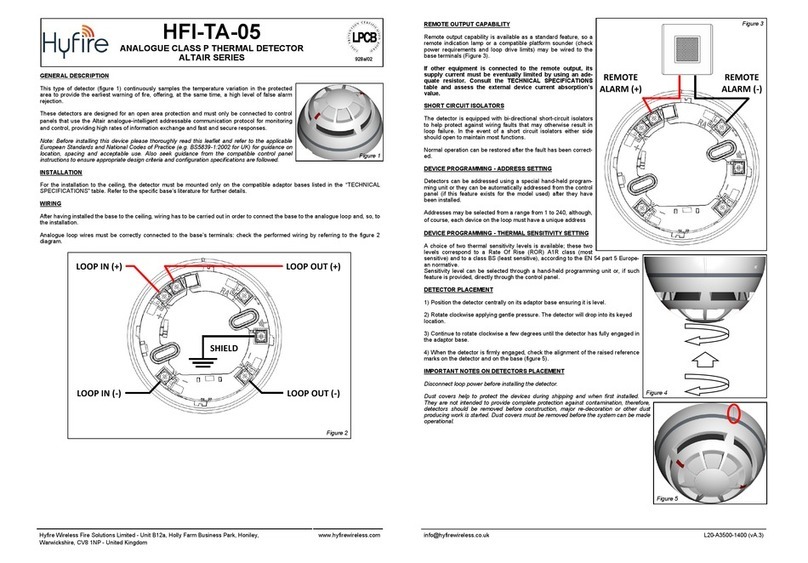
hyfire
hyfire Altair Series instructions

IFM Electronic
IFM Electronic EFECTOR 500 PD70 Series operating instructions
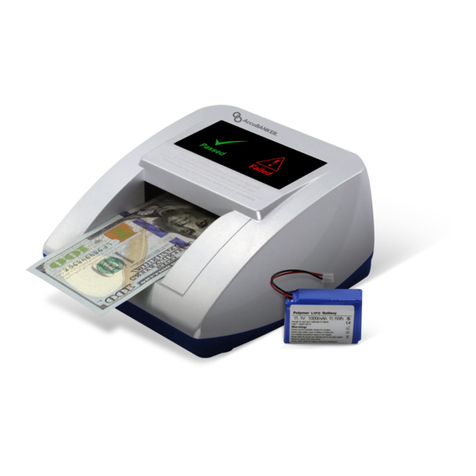
AccuBANKER
AccuBANKER QuadScan D470 user guide
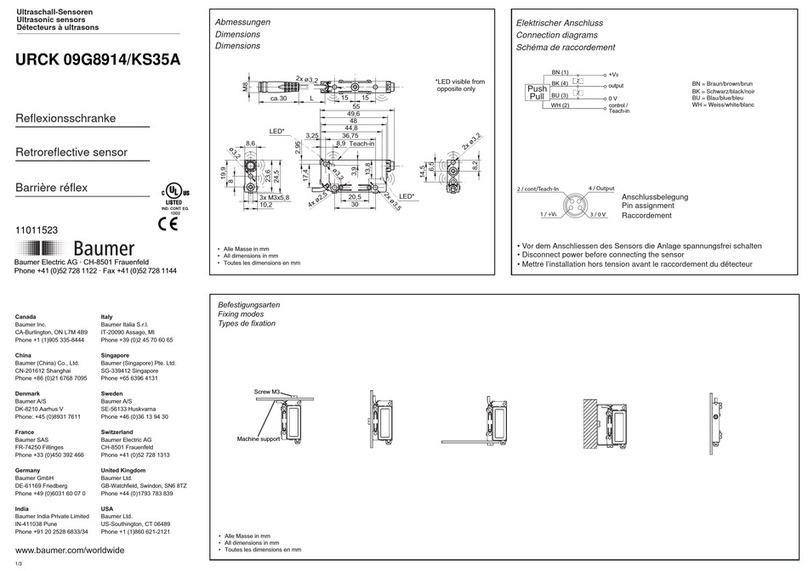
Baumer
Baumer URCK 09G8914/KS35A instructions
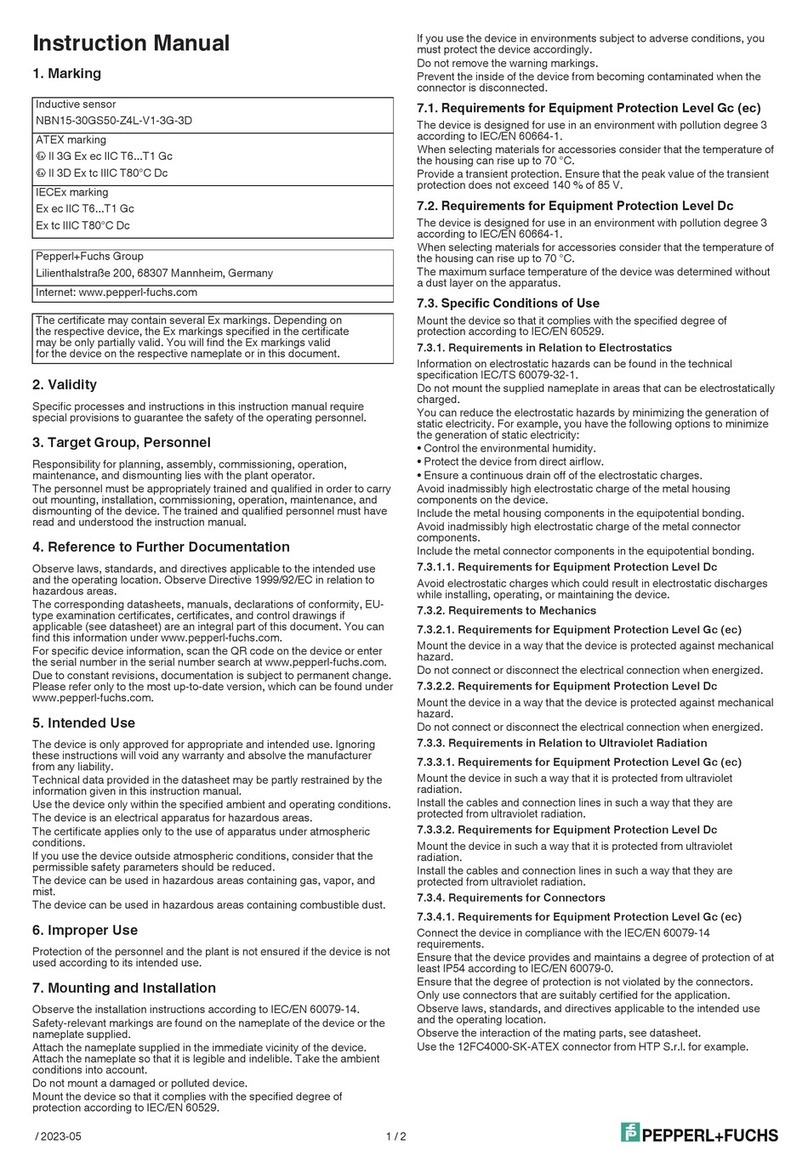
Pepperl+Fuchs
Pepperl+Fuchs NBN15-30GS50-Z4L-V1-3G-3D instruction manual
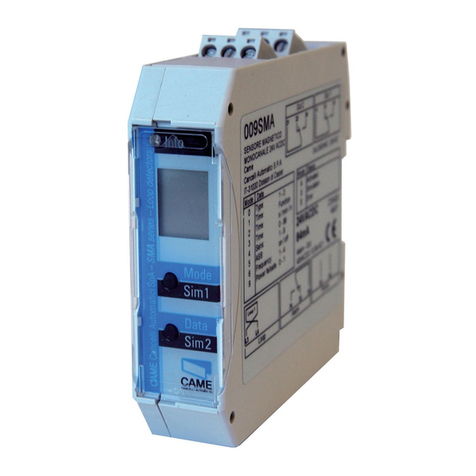
CAME
CAME SMA Original instructions



